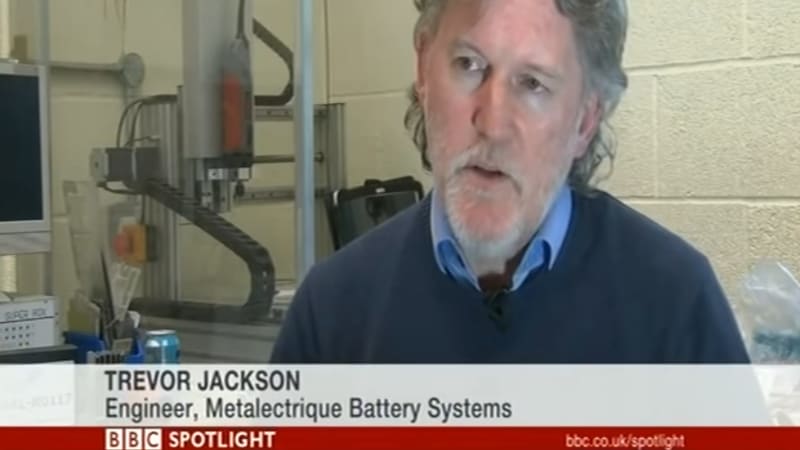Another aluminum-air battery promises 1,500 miles of range from a charge
https://ift.tt/35Z1ZM7

With billions of dollars being poured into battery electric vehicles, what seems like millions of new innovations crop up every year. Some inventions will find successful implementation. Most will wash up on the shore as EV industry jetsam. The Daily Mail reports on another novelty awaiting judgment, an aluminum-air battery (Al/air) created by British engineer Trevor Jackson. Jackson claims that if you replaced a Tesla Model S lithium-ion battery with one of his aluminum-air batteries of the same size, range would increase from 370 miles to 1,500 miles. Since the Al/air battery is lighter than a lithium-ion unit, Jackson says that if you used an Al/air battery of equivalent weight, the Model S would run for 2,700 miles on one full charge.
First, some history. Al/air, one of a category of metal/air batteries, aren’t new, and zinc-air batteries are already in use in places like solar installations. Researchers developed them in the 1960s but couldn’t commercialize them. More accurately called a fuel cell, electricity generation happens when aluminum is dipped in an electrolyte, then reacts with the air. In the Sixties, the technology was full of limitations: It required use of expensive, pure aluminum to get a suitable reaction; the electrolyte was poisonous and caustic; and the reaction caused a gel to form that clogged the air pathways in each cell.
Jackson, after service as an engineer with Rolls-Royce and British Aerospace, and a stint maintaining nuclear reactors on a Royal Navy submarine, starting developing his battery in his workshop in England in 2001. As related in a very good TechCrunch piece, Jackson had just as much trouble with the politics of his battery, as bickering over the technology turned into an international affair between France and England when the French government called the technology “strategic and in the national interest of France.”
Working in his garage, Jackson says he perfected an electrolyte safe enough to drink — a trick Jackson has repeated for investors — that doesn’t cause the clogging gel. His battery doesn’t need expensive, pure aluminum, and third-party testing has apparently shown his battery has an energy density eight or nine times that of lithium-ion. Aluminum is the most abundant metal in the Earth’s crust, and much easier and more cost efficient to recycle than the elements in a lithium-ion battery. Furthermore, the waste product in an Al/air battery is aluminum hydroxide, which can be recycled to produce more aluminum. Jackson says that if someone put his battery in a Model S, sized to provide a range of 370 miles, it would not only be much lighter, it would be one-sixth the cost.
Nor is Jackson the only one working on Al/air batteries. In 2013, Israeli startup Phinergy showed a Citroën C1 fitted with its Al/air battery that uses distilled water as an electrolyte. That battery acted as a reserve for the lithium-ion pack with a 100-mile range, able to power the hatchback for another 1,000 miles. We aren’t certain if the company’s a going concern; the website dates from 2016, and a deal with Arconic for aluminum fell through, but Phinergy continues to receive patents.
The drawback is that Al/air batteries can’t be recharged, because the electrolyte reaction works by ‘eating’ the aluminum. The Phinergy unit needed to be refilled with distilled water every 200 miles, and required replacement after reaching the end of its range. Jackson says he’s worked out a swap system that takes 90 seconds beginning to end. With the wholesale price of a new battery at £60 ($77 U.S.) per kilowatt-hour, he says the cost-per-mile is about £0.08 ($0.10 U.S.).
Now comes commercialization, expected to begin next year on several fronts after a £108,000 grant from the UK’s Advanced Propulsion Centre, and a “multi-million deal” with a company called Austin Electric, which is said to own the right to use the Austin Motor Company logo. According to the Daily Mail report, Austin Electric will begin “putting thousands of [Jackson’s batteries] into electric vehicles next year,” and is in talks with a UK supermarket chain about providing battery swap facilities. Aside from that, the batteries are expected to go into tuk-tuks in Asia and electric bikes.
Eventually, Jackson wants to sell conversion kits for £3,500 ($4,540 U.S.) that would turn an ICE-powered car into a battery electric EV with electric motors on the rear wheels. That last bit seems especially outrageous, but in a story full of astonishing claims centered around an industry full of breathtaking assertions, we’ll do what we always do: Wait and see.
Auto Blog
via Autoblog https://ift.tt/1afPJWx
October 22, 2019 at 08:58AM